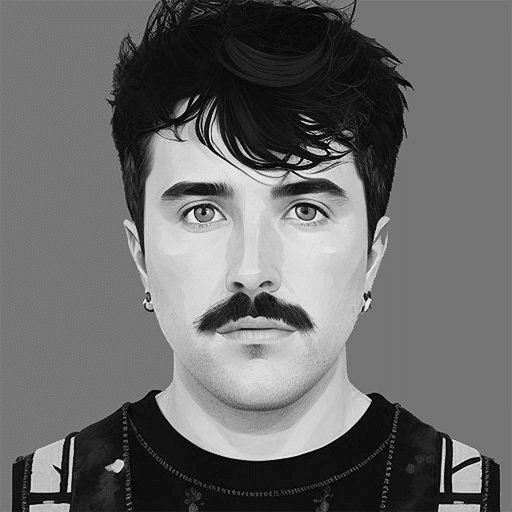The biggest challenge SaaS companies face is not coming up with fantastic products.
Most Saas founders are phenomenal in creating products that solve problems.
So, what’s the biggest challenge SaaS brands face?
Two words — product marketing.
What is Product Marketing?
SaaS product marketing refers to the marketing strategies SaaS brands apply to software products and apps. The main purpose of Saas product marketing is to create demand for your product and drive its adoption and retention. Because of this, it is focused on the customer and their needs. It also means product marketing must transcend 4 main SaaS growth disciplines to succeed. These are:
- Product development
- Marketing
- Sales
- Customer experience and success
Combining these disciplines makes for a powerful marketing strategy with the right messaging and proper positioning. This results in faster product adoption rates and higher retention rates.
SaaS Product Marketing vs. Traditional Product Marketing
While both are designed to drive business growth, their execution is different. The biggest difference in execution is that traditional SaaS marketing focuses on acquiring marketing-qualified leads (MQLs). On the other hand, product marketing focuses on product-qualified leads (PQLs). A PQL is a lead that signals their buying intent through product usage (like a free trial or demo) rather than traditional marketing triggers.
Because PQLs have experienced your product, they know the value your solution brings. This makes them more likely to convert. More importantly, it increases the chances of them being lifelong customers.
This difference in focusing on PQLs vs. MQLs also means a difference in the marketing strategies and channels you leverage.
Another major difference is that product marketing focuses on growing your brand through user retention, while traditional marketing focuses on acquiring prospects to hand over to the sales team. The biggest advantage of the former is that it has better results and shortens the sales cycle.
Why Should You Care?
So why should you care about SaaS product marketing?
Because product marketing is the backbone of a SaaS brand’s growth. It’s responsible for helping you:
- Continuously onboard users
- Increase your user adoption rates
- Reduce churn
Many brands are quickly realizing the importance of product marketing, with research showing that 46.6% of brands are investing as much as $250,000 in it.
Product marketing also helps you identify opportunities for product improvement and helps drive account expansion.
While this may all sound simple, there’s one huge challenge — SaaS marketing involves selling an intangible product.
If you’re a SaaS brand looking to onboard users quickly and grow your customer base, one of the marketing strategies you must adopt is SaaS product marketing. Because it lies at the intersection of marketing, sales, product development, and customer support, it gives you a powerful way to connect with your target audience.
Not only does it connect you with the right audience faster, but it helps boost your adoption and retention rates. As a result, your SaaS brand will enjoy healthy, steady growth.
What about SaaS brands that stick to traditional forms of marketing?
Research shows that 75%-95% of new products fail each year. One reason is that customers don’t really understand what the product does. And this is exactly what effective product marketing helps you avoid since it’s mainly based on educating users about your product.
For products that survive, neglecting SaaS product marketing results in slow growth. And with SaaS being a fast-moving industry, you lose if you snooze. That’s why you need to employ marketing strategies that deliver results fast. Otherwise, your competitors will get all the traffic and customers you could have gotten.
Besides slow results, SaaS brands that don’t invest in growth marketing strategies like SaaS product marketing end up paying more for their marketing. This is because they miss out on strategies that shorten the sales cycle and have lower customer acquisition costs.
Ideal SaaS Marketing Team
Now that you know what SaaS product marketing is, let’s quickly look at the players you need to create an impactful marketing team.
We’ll break this down according to the different growth stages of SaaS brands. This is because the marketing needs of SaaS businesses change as they grow, as do their marketing budgets.
Note: Images in this section courtesy of Growth Mentor.
Startup
Because most startups are bootstrapped and have barebones marketing budgets, their SaaS product marketing teams are lean. They typically include:
- Head of marketing/CMO
- Growth marketing manager
- Product marketing manager
- Content marketing manager
- Brand marketing manager
- Senior designer.
Budget permitting, these also have one or two juniors to help with departmental tasks.
Another fact to note is that while you may skimp on other departments, you must ensure your content marketing department gets all the support it needs. After all, content plays a critical role in almost every marketing effort. And if you don’t have the budget to hire a dedicated content team, you can always outsource to a reputable SaaS marketing agency.
Mid Market
As your SaaS brand grows, your marketing team needs to be expanded to better handle more demanding marketing needs.
Here, we’ll consider mid-market-sized SaaS brands with annual revenue of $20-$100m.
So what should your marketing team look like at this stage?
As you can see, each department has grown by at least one more team member compared to a startup’s marketing team.
Besides this, you should also add a new department — marketing operations.
This is because larger SaaS brands require a data-driven marketing strategy that’s product-led.
A marketing ops manager and their department are responsible for analyzing the results of your marketing strategies. A team of dedicated data analysts and strategists is necessary to do this.
At this stage, you also need to grow your content marketing team. This will help you scale your SEO efforts much faster. You can also consider adding PPC marketing to further expand your reach.
Enterprise Level Saas Brands
As your brand reaches enterprise levels, your marketing team will have to evolve to match the demands of a large SaaS brand. One reason for the evolution is that as your brand grows, you can’t grow it on product-led marketing alone.
At this stage, how you structure and grow your marketing team depends on many factors. One of them is the marketing channels that best suit your needs. However, the general structure for enterprise-level SaaS brands looks like this:
One new department you’ll notice at this level is the marketing automation team under the Growth Marketing Director. This is because running marketing campaigns at scale requires a lot of automation to ensure you have good ROIs for your campaigns.
Another department that gets a makeover is the brand marketing team. Of note is the addition of social media, events, and community managers. One reason for this is your brand reputation at this stage is one of your most valuable marketing assets. Because of this, you need to put extra effort into maintaining a strong, positive social presence and brand image.
Best Channels To Leverage for SaaS Product Marketing
With your SaaS product marketing team in place, the next step to implementing your strategy is to determine the marketing channels to leverage. Some of the top ones to consider include:
Content Marketing and SEO
Content marketing is one of the most effective inbound marketing channels to leverage when kicking off your campaign. This involves creating helpful content that positions your product as the hero in your audience’s journey to overcome a problem or achieve a goal. For your content to successfully convert visitors into customers, you must:
- Implement the jobs-to-be-done (JTBD) framework
- Create content for all stages of your funnel — top of the funnel (ToFu), middle of the funnel (MoFu), and bottom of the funnel (BoFu).
- Get subject matter experts (SMEs) to help with content creation for better accuracy and to help you meet Google’s E-A-T standards.
To ensure the effectiveness of your content marketing, you need to couple it with a powerful SaaS SEO strategy.
Social Media Marketing
Yes, even B2B SaaS professionals use social media to discover new products and solutions. Research shows that 78% of social sellers outperform their peers who don’t leverage social media as one of their marketing channels.
LinkedIn is one of the best social media platforms to leverage for social selling for SaaS brands. This is because LinkedIn is the platform of choice for professionals to build meaningful connections that help them.
As you plan your SaaS product marketing strategy, include social media as one of your channels, especially LinkedIn.
Email Marketing
Another channel to utilize in your SaaS product marketing campaigns is email marketing.
Email marketing is one of the most powerful outbound marketing channels at your disposal. One reason for this is that the people on your email list, especially those who signed up for a free trial, have already expressed interest in your product and are more likely to turn into paying customers.
SaaS Directories
A SaaS business directory is an online registry that lists SaaS businesses in an index. The index is organized alphabetically by industry or location, among many other factors, and each business’s listing is linked to the company’s website.
SaaS directories are a powerful SaaS marketing channel because they are usually a go-to resource for B2B buyers shopping around for a SaaS solution. Plus, they’re excellent for social proof, lead generation, brand recognition, and more.
Other Viable SaaS Product Marketing Channels
Besides the 4 channels listed above, you can use many other channels to power your marketing strategy. Some of the most effective ones include:
- Video marketing
- Paid ads
- Affiliate marketing
- Brand marketing
- Influencer marketing
- Cold emailing/calling
Again, the channels you use depend highly on your product, target audience, and marketing strategy.
This brings us to our next section…
5 Considerations For An Effective SaaS Product Marketing Strategy
Before we wrap up our SaaS product marketing guide, let’s look at some effective considerations to ensure your campaigns have maximum impact.
1. Define Your Target Audience
One of the first considerations to help you design an effective SaaS product marketing strategy is defining your target audience. Knowing who will benefit the most from your solution is crucial to developing the right messaging and position to attract the right audience. It also helps increase your conversion rates and reduce your customer acquisition costs.
Once you define your target audience, find out what they want to know about your product and how best they can use it to solve their problems. You can use both surveys to gather more information and data. Use this to create your ideal customer profiles (ICPs) and buyer personas.
2. Get Your Positioning and Messaging Right
Once you’ve defined your target audience, the next consideration is how you’ll position your product. Positioning deals with the context within which you will present your product to your audience. It includes information about who you are, the problems you solve and who you solve them for, and user expectations, among many things.
One reason positioning is important to your strategy is that it clears expectations and helps overcome any negative assumptions they may have about your product. Secondly, positioning helps portray your product as superior in its category, leading to better adoption rates.
Once you’ve nailed your positioning, you must craft messaging that effectively conveys it to your target audience. This requires expert SaaS copywriters who understand your brand, product and audience.
3. Define Marketing Goals and Key Performance Indicators (KPIs)
What are your goals for your SaaS product marketing strategy?
The answers to this question are essential considerations as you design your strategy.
Defining your goals from the onset will help guide your strategy as it helps you outline tasks that must be performed to achieve said goals.
Once you’ve defined your goals, you need to assign KPIs you’ll use to track your progress. Common KPIs for SaaS products include retention rates, activation rates, monthly recurring revenue (MRR) and more.
Setting goals and measuring KPIs is also an excellent way of identifying growth opportunities.
4. Map Your User Journey Campaign to the
The user journey refers to the steps users take to move from being aware of your product to be paying customers.
Mapping the customer journey helps you visualize what you need to do to move users along the journey until they convert.
5. Develop Your Strategy According to Your Goals and User Journey
For your SaaS product marketing campaigns to be effective, you must develop strategies aligned with your goals. Your strategy must also be aligned with your user journey. Your strategy must be broken down into:
- Acquisition: The best channels are your website, content marketing, and SEO.
- Activation: Using email marketing and strategic user onboarding works wonders here.
- Adoption: The adoption stage is designed to make users move from a free trial to be a paying user. In-app marketing is an excellent strategy for this.
- Retention: Retention is key to growing your SaaS brand. You can achieve it by constantly engaging with your customers via channels like in-app messaging and emails.
- Referral: At this stage, your goal is to create advocates for your brand. Excellent tactics include getting customer reviews, encouraging users to upgrade their plans through in-app messaging, and more.
Once you’ve sorted these main foundational issues, you can build on this to create a bullet-proof SaaS product marketing campaign to grow your brand.
SaaS Product Marketing: Key to Supercharging Your Growth
SaaS product marketing should be an essential ingredient in your SaaS marketing strategy. With the fierce competition in SaaS, getting user adoption quickly is critical to success. That’s exactly what product marketing will help you do.
And because SaaS product marketing is as fast-paced as the SaaS industry it serves, keeping abreast can be a mammoth task for many brands. That’s why outsourcing to an agency that lives and breathes SaaS marketing would be the best marketing investment you can make.
Need help with your SaaS product marketing?
Then reach out today. We’ll be more than happy to help.













